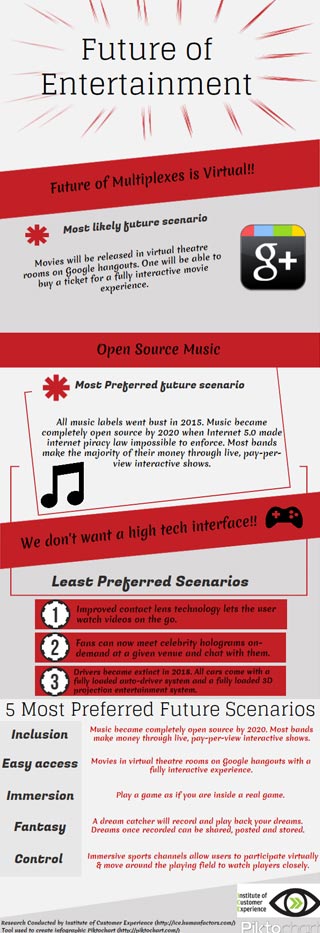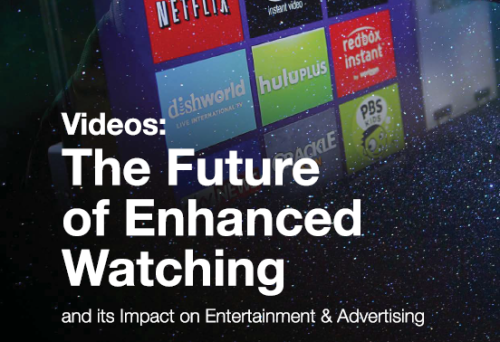
Much is being written every day about the rise of streaming videos and their increasing popularity: be it home-grown Indian OTT platforms or global giants, everyone from Hotstar and Voot to Amazon Prime and Netflix are vying for eyeballs in a market that has seen data consumption explode thanks to the entry of Jio which, in turn, had a cascading downward effect on access rates for mobile subscribers across the country.
Click to download PDF of this report
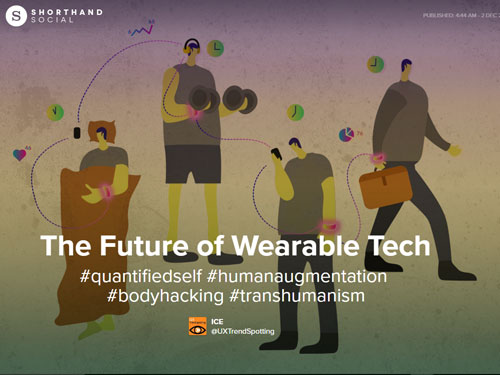
Wearable technologies first came in, in a smaller form, as more-convenient-than-a-smartphone-sized gadget. The Apple Watch and the Fitbit being the most commonly used wearables, followed by some wearable devices that are successful in the medical industry, such as SugarBEAT, a skin patch for diabetics. Almost any data emitting from the human body can be monitored. Owlet is a boon to parents who want to monitor their baby's heartrate and oxygen levels while they sleep. Tracking of various elements, number of steps, heartbeats per minute, whether a patient has eaten their next meal, blood pressure count, etc. are all possible data that can be collected, examined and analyzed for feedback from a wearable device.
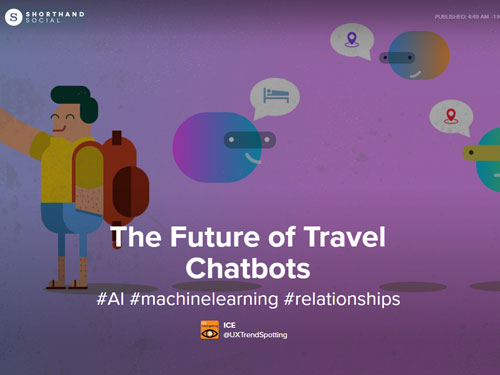
Move over apps, and say hello to travel chatbots. Travel agents, airlines, and hotels are all introducing chatbots who are knowledgeable, accurate and have a vast amount of information, while having a good conversation with you.
They can plan trips within your budget and also use NLP (natural language processing) to recognize your specific query "weekend getaway from London" or “music festival in Ibiza.” The feeling of having a virtual assistant, who really cares about modifying your budget and itinerary and giving you the best deals, is only possible because we are moving from apps to conversational products.

While 3D printing is becoming increasingly accessible to us, the printing of food as well as its connection to our food apps, fitness devices and medical records is a future not far away. Bot food will serve different purposes in the future - it will make its way into our homes and feed a vast population on Earth as well as astronauts in space.
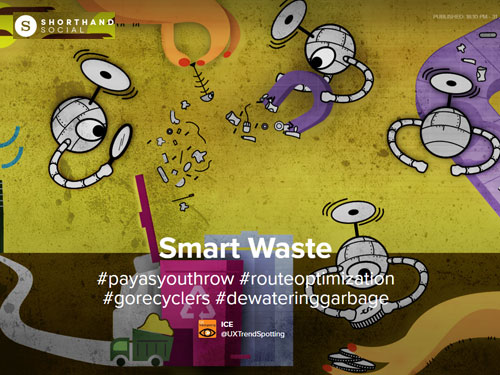
Could the future be about paying for the garbage you generate? Can we bring our waste generation down to zero? Here are some recent trends in waste collection and management that indicate the directions of the future of waste.
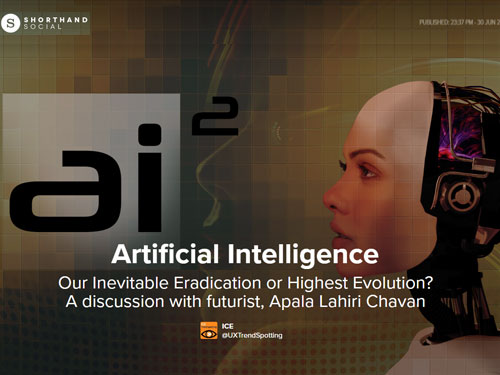
Our Inevitable Eradication or Highest Evolution? A discussion with futurist, Apala Lahiri Chavan
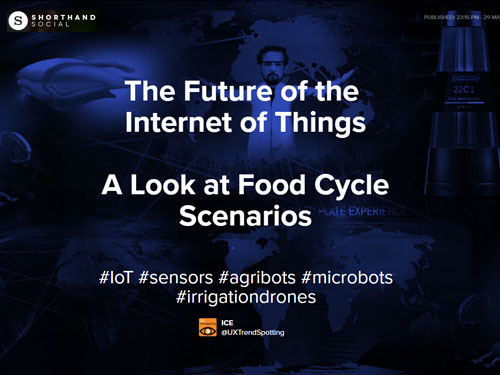
As Ivan sits at his IoT Headquarters in California, he and his team plan out the entire food cycle for their exclusive brand of organic tomato sauce, which are the only patented organic seeds for tomatoes on Earth in the year 2050. Using a host of connected devices, sensors, bots and drones, Ivan and his team are plan a farm-to-plate experience for their premium customers. Production, post-harvest, processing, distribution and consumption - are all controlled using the Internet of things to prepare the most nutritious and connected tomato sauce.
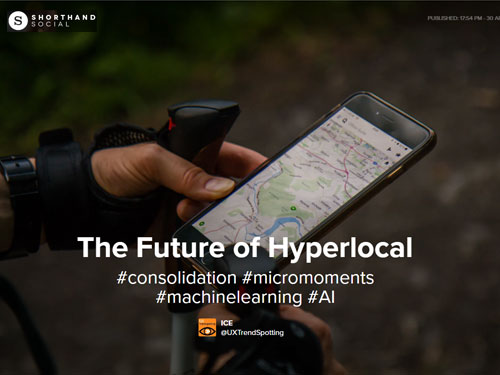
#consolidation #micromoments #machinelearning #AI
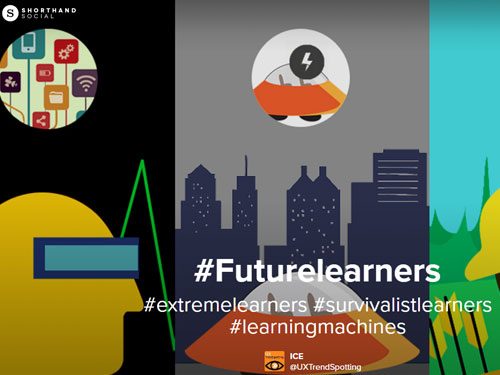
WHAT PERSONAS MIGHT HUMAN AND MACHINE LEARNERS FALL UNDER BY THE YEAR 2050?
We live in a connected world, where tweeting to thousands on Twitter gives us a dopamine rush, dating is algorithm-based, and proximity doesn't mean intimacy any more.
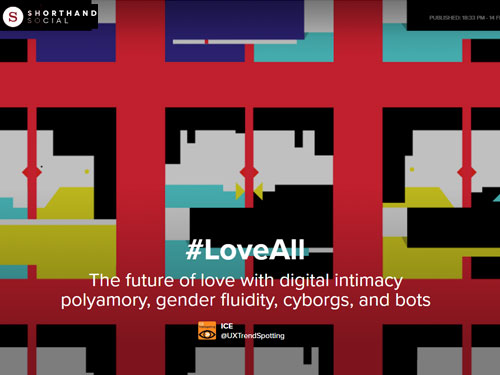
The future of love with digital intimacy polyamory, gender fluidity, cyborgs, and bots
We live in a connected world, where tweeting to thousands on Twitter gives us a dopamine rush, dating is algorithm-based, and proximity doesn't mean intimacy any more.

Six Notes for Smart City Futures Note 1: CONNECTIVITY
This report looks at the disruptive potential of automated vehicles: their impact on commuters, car companies, vehicle design and urban planning. It warns of the potential dangers of their unbridled proliferation and prerequisites to their effective deployment.
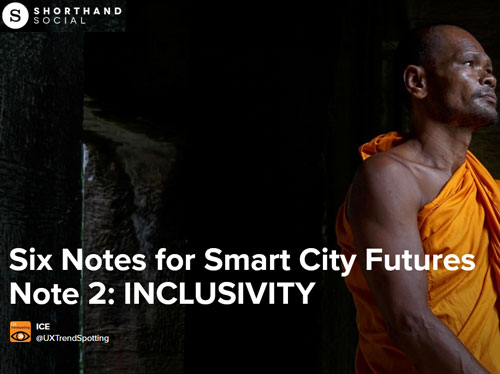
Six Notes for Smart City Futures Note 2: INCLUSIVITY
Although we tend to think of cities as amalgamations of diversity, the history of urban planning and development reminds us that our urban geographies are deeply classist and racialized.
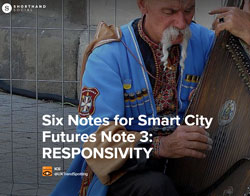
Six Notes for Smart City Futures Note 3: RESPONSIVITY
By “Responsivity” we mean that a city's public infrastructure will be in constant touch with the needs of its denizens. What that means, or how a city will aim to know its residents must change in tune with the 21st century, for “structures that produced progressive government in 1890 ensure regressive results [now].”

Six Notes for Smart City Futures Note 4: HERITAGE
How does the Smart City attend to its cultural heritage? There is often a perceived tension between technology and culture, more prominent in conservative societies, a cultural sense of technology as somehow antithetical to our cultural traditions and ways of doing things.

Six Notes for Smart City Futures Note 5: MOBILITY
Conversations about smart cities invariably focus on data as the new blood that runs through a city's veins. While this may be metaphorically accurate, it is the movement of people and goods that remain the among the smart city’s most crucial needs.

Six Notes for Smart City Futures Note 6: SUSTAINABILITY
Although "sustainability" is a term used to qualify many urban, economic, development, and social priorities, we use it here to hone in on one that is crucial to our future in the Anthropocene: environmental sustainability.
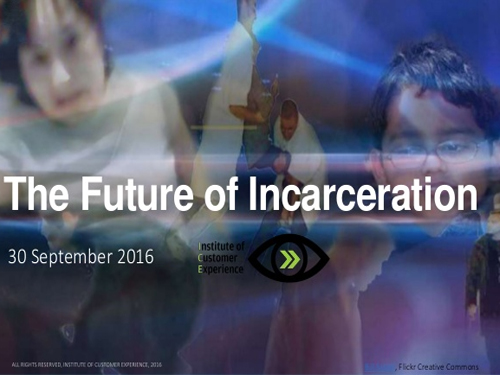
The Future of Incarceration
Incarceration has historically been about punishment but recently the trend has shifted towards reform, schooling, and an entrepreneurial spirit. In this report, we look at trends in prison experiences, technology, as well as edtech and entrepreneurship in prisons. Prisons are increasingly enabling inmates to get a vocational training, degrees, and even healing. No longer are inmates looked upon as "less than human" but there is a curiosity about their minds and views that are pro-reform so that they integrate well into society on their release. We then forecast three scenarios on mass incarceration in 2040.

World as a
Shopping Interface
This month, at the Institute of Customer Experience, we explore trends that are converting the world into a shopping interface. Here are the top six trend categories covered in this report.
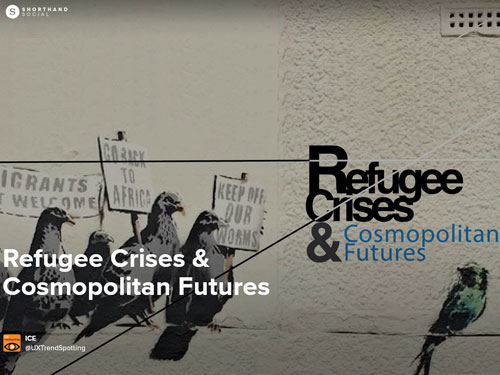
Refugee Crises and Cosmopolitan Futures
What if we didn't think of refugees as temporary, anomalies, and aberrations, but products of the way in which our very world is organized—both the exception and the rule?
What if we didn’t look at refugees as a sign of our broken times, but as prompts to a possible future?

Designing for Martians – people and environments in 2040
Check out our report on Designing for Martians in 2040, where we explore what new planetary environments might look like through the lenses of future professionals in the space-travel industry. We hope this gives insights into what designers will need to consider in order to be space-ready. #FutureOfSpaceTravel

The Future of Work
The potential unemployment owing to automation and improvements in ICTs is likely to be more drastic than earlier rounds of automation. Will people be redundant at the workplace? Is this likely to lead to unemployment and strife? Or can we use this opportunity to explore more art, travel, have more fun, in short be more human?

UX and Design Trends for 2016
Trend spotters at the Institute of Customer Experience (ICE) are always on the lookout for innovations that are defining/changing the way people perceive products, brands, experiences and design. This year, after reading several articles and researching innovations on the radar and trends that will change the course of action in the coming years, we shortlisted these top five trends.
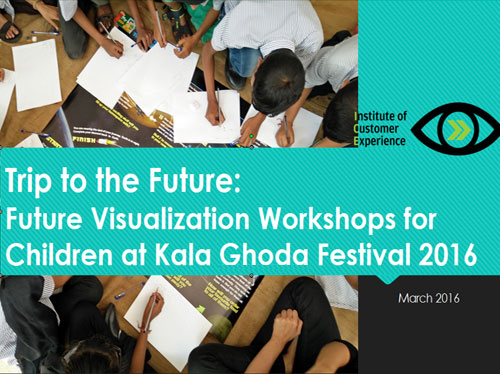
Trip to the Future
At Kala Ghoda Arts Festival 2016 held in Mumbai, we had an opportunity to conduct two playshops—one for an NGO called Akanksha and the second for the KGAF 2016 festival children. The responses we received were intriguing and actually point to current trends in 2016, indicating the directions in which technology will evolve in the future.
- What is the Singularity?
- How is it predicted?
- What are its implications?
- What does it mean for human evolution?
- What when it happens: Utopia or doom?
- Beginnings of the Singularity
- Questions that arise
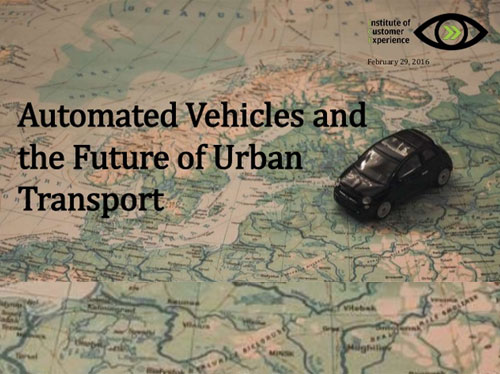
Automated vehicles and transport systems
This report looks at the disruptive potential of automated vehicles: their impact on commuters, car companies, vehicle design and urban planning. It warns of the potential dangers of their unbridled proliferation and prerequisites to their effective deployment.
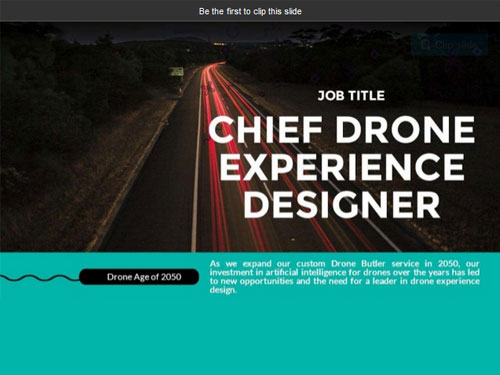
Chief drone experience designer
Drones are already a buzzword, and the future we can imagine consists of a ‘life with drones’, as they are due to play a big role in several businesses such as medical care, photography, delivery, adventure sports, and so on.
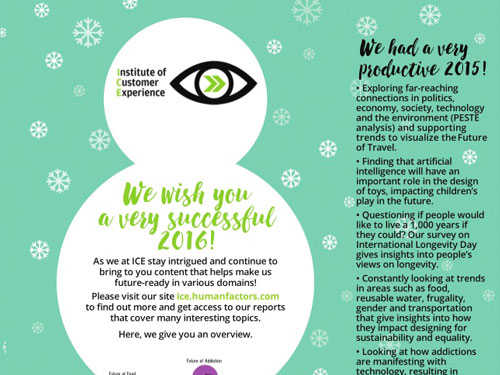
Happy Holidays from the ICE team!
We wish you a very successful 2016! As we at ICE stay intrigued and continue to bring you content that helps make us future-ready in various domains!

The Technological Singularity
The Technological Singularity is a future point in time when technology will rapidly improve itself to surpass human intelligence, changing human life as we know it. In this report, the following topics are covered:
- What is the Singularity?
- How is it predicted?
- What are its implications?
- What does it mean for human evolution?
- What when it happens: Utopia or doom?
- Beginnings of the Singularity
- Questions that arise
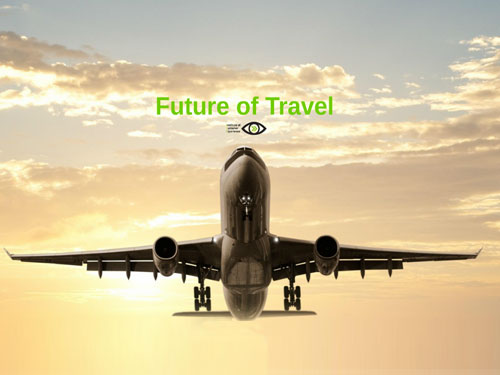
Future of Travel
In this report, we explore far reaching connections between politics, economy, society, technology and environment with travel. It’s not just the trends but their interplay that we have based our speculative scenarios and product visualizations for the Future of Travel.

Smart homes for elderly care in india
As various smart home technology companies spring up in India, in this report, we explore how smart homes can benefit the elderly by listing the cultural dimensions of the elderly in India and taking a closer look at a model for elderly care in Norway for inspiration.
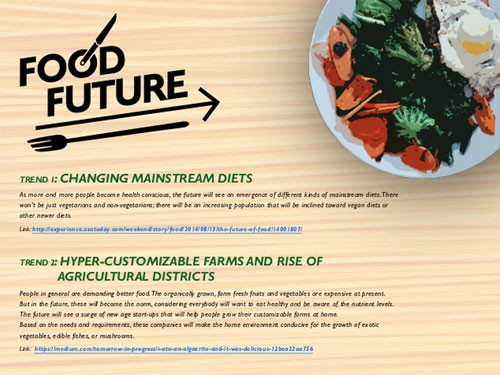
Food future
How will food and everything related to food will look like in future? What role will technology and innovation play in making people more conscious about what they eat?

Survey for International Longevity Day
Survey conducted on International Longevity Day, October 1st, 2015 with responses of ~30 participants across the world.

Future of Water Insight Chart
Will we stop packing a water bottle and collect air on-the-go? Will personal straws be the next big thing to ensure we get access to drinking water? Will ancient desalination techniques be our saving grace and enable us to engineer the future of water? Or will the ocean start cleaning itself?

Future of Addiction
Derived from the Latin term for “enslaved by” or “bound to”, Addictions primarily lead to cravings, dependence and uncontrollable use with negative consequences.
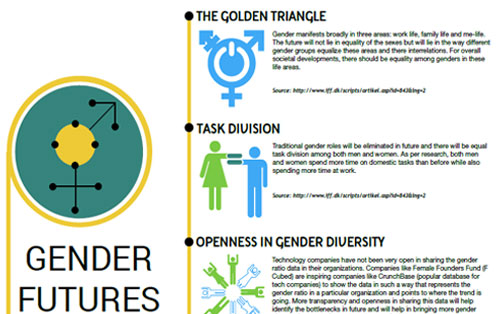
Gender Futures Insight Chart
Gender equality is rst and foremost a ma er of equality between family and working life and hence of equalizing the qualities and values provided by the family with those provided by work.”
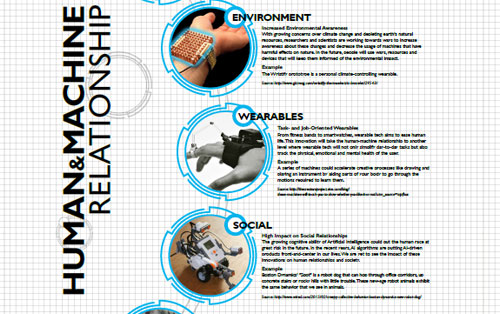
Human-Machine Relationship Insight Chart
HEALTHCARE
Healthy Organs On-the-Go
Open-access to organs for patients waiting for an organ transplant will be easily available with the advent of 3D bio-printing. These 3D bio-printers will help in creating custom-made organs and body parts.
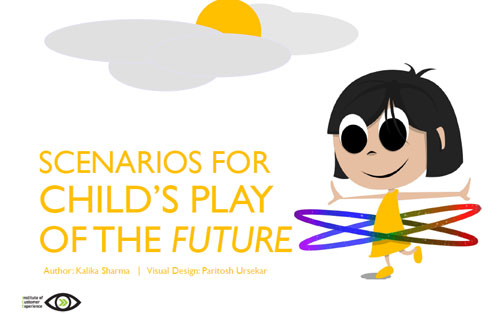
Scenarios for Child’s Play of the Future
Toy-Ro, an intelligent, self-adapting toy, is born on the day Remy 3Dprinted it as a 3-year-old so that she could make drawings on any surface. Then, Toy-Ro simply takes the shape of any surface Remy puts it on for drawing, and gets to know Remy, giving her inspiration with colors and patterns.
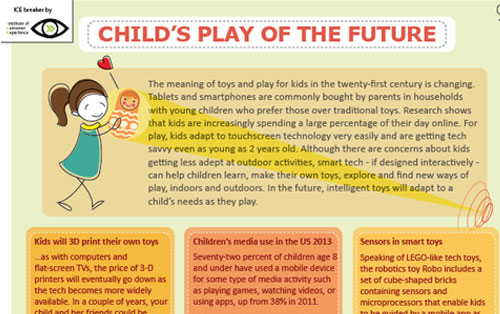
Child's Play of the Future
The meaning of toys and play for kids in the twenty-first century is changing. Tablets and smartphones are commonly bought by parents in households with young children who prefer those over traditional toys. Research shows that kids are increasingly spending a large percentage of their day online. For play, kids adapt to touchscreen technology very easily and are getting tech savvy even as young as 2 years old.
Although there are concerns about kids getting less adept at outdoor activities, smart tech - if designed interactively - can help children learn, make their own toys, explore and find new ways of play, indoors and outdoors. In the future, intelligent toys will adapt to a child’s needs as they play.
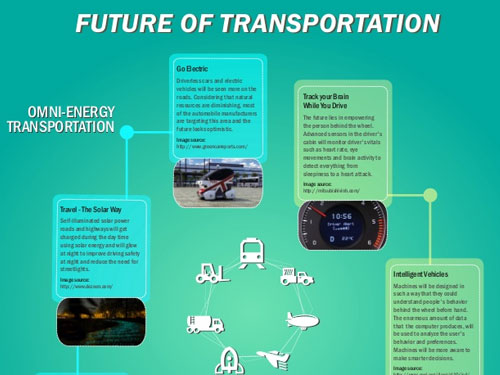
Future of Transportation
What is the future of transportation? We at the Institute of Customer Experience share our insights by analyzing the trends in technological advancements in transportation, which you can find on our Facebook page: facebook.com/UXTrendspotting

Future of Love and War
Love is a very complex emotion to decode. Or is it?
Machines and their relationship with humans have been explored in great detail. However the impact of machines on the future of love and the connection between technology and emotions seem more pertinent now than before.
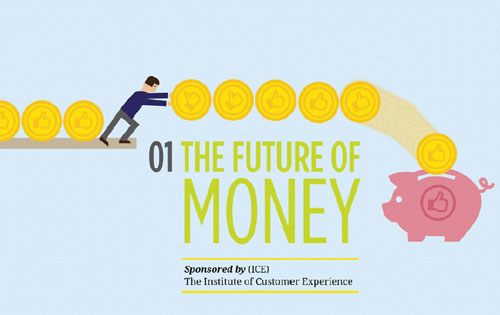
Reputation Currencies
The first in a series on the Future of Money. Sponsored by The Institute of Customer Experience (ICE).
Today’s world increasingly challenges us to think differently about value and money. Almost everyone agrees that reputation is important. But how important is it? Does it have an impact on your finances? What is the currency of reputation and is it transferable or exchangeable?
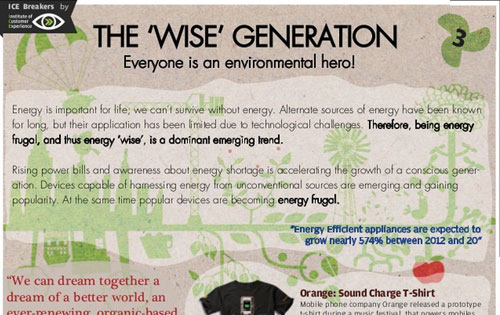
The 'Wise' Generation
We come across dozens of design breakthroughs and technological innovations daily--so many that it's easy to miss important trends emerging in the chaos all around us and not connect the dots to see the BIG picture.
Here at The Institute for Customer Experience (ICE), we understand the business and design value of capturing the right trend insights at the right moment. We observe and analyzed trends in design, technology, and business, and keep our fingers on the pulse of the global zeitgeist. In this series of trendbriefs, we bring you alerts on what's trending in our world and their possible impact on our future.
Subscription to ICE Breakers - http://eepurl.com/S1ZFL
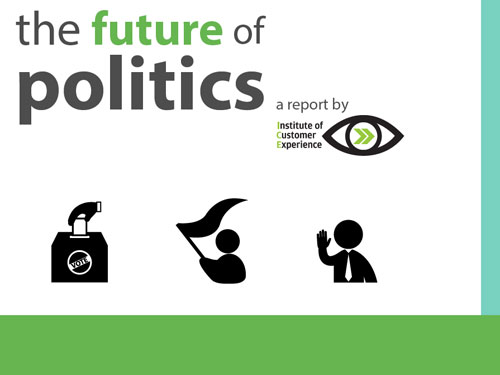
Future of Politics
How will the future of politics and political campaigning look like? Who will be the heroes in the future political battles? Where will the battle take place - on the streets or in the virtual world? What weapons will the future political parties use?
In this report, the Institute of Customer Experience raises many of such questions and presents possible scenarios that might become a reality given the present trends.
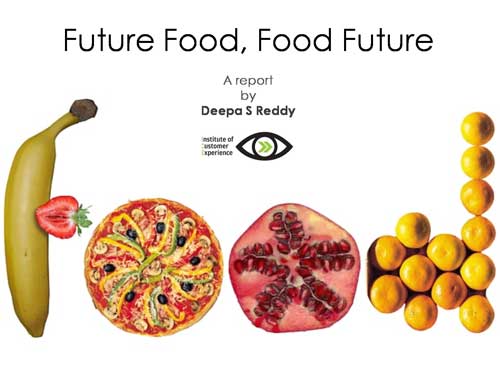
Future Food, Food Future
By the year 2050, the world’s population is projected to swell to 9 billion. 80% of us will be urban-dwellers. Demand from developing countries for a wider range of foods is on the rise. Experts estimate that we will need new farmland larger than the size of Brazil to produce enough to meet the demands of growing populations.
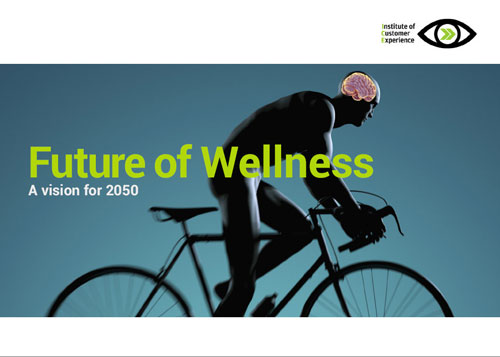
Future of Wellness - A vision for 2050
Wellness, in today’s context, is much more than diagnosing and curing poor health or diseases. It is a multidimensional and holistic state of being that is conscious, self-directed, and constantly evolving. Trying to make sense of wellness in a world of rising healthcare costs, shortage of wellness professionals, and technological advances in everything from computing to genetics, gives rise to several pertinent questions.
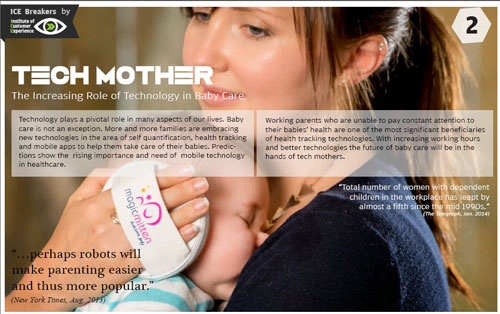
Tech Mother
We come across dozens of design breakthroughs and technological innovations daily--so many that it's easy to miss important trends emerging in the chaos all around us and not connect the dots to see the BIG picture.
Here at The Institute for Customer Experience (ICE), we understand the business and design value of capturing the right trend insights at the right moment. We observe and analyzed trends in design, technology, and business, and keep our fingers on the pulse of the global zeitgeist. In this series of trendbriefs, we bring you alerts on what's trending in our world and their possible impact on our future.
Subscription to ICE Breakers - http://eepurl.com/S1ZFL
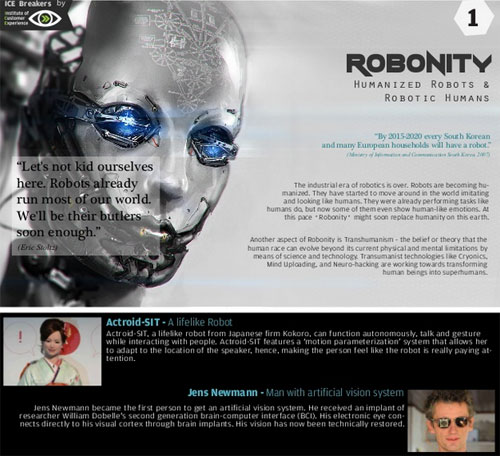
Robonity: Humanized Robots and Robotic Humans
We come across dozens of design breakthroughs and technological innovations daily--so many that it's easy to miss important trends emerging in the chaos all around us and not connect the dots to see the BIG picture.
Subscription to ICE Breakers - http://eepurl.com/S1ZFL
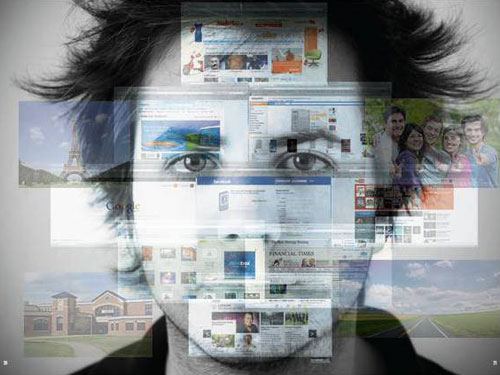
How Lifelogging Transforms Us All
Lifelogging is the practice of tracking personal data generated by our own behavioral activities in continuous digital streams. As it is slowly becoming mainstream, it raises a lot of intriguing questions and thoughts.
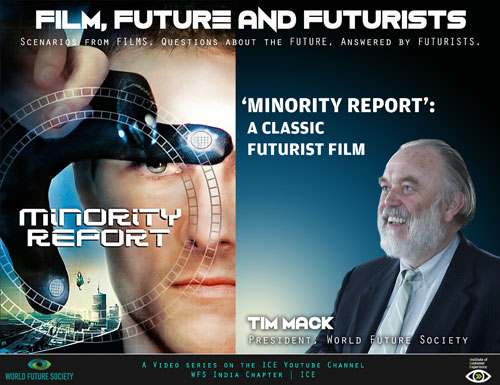
Film, Future and Futurists
Scenarios from FILMS; Questions about the FUTURE, Answered by FUTURISTS.
ICE, the India Chapter of World Future Society (www.wfs.org) met with leading Futurists on Google Hangout and asked them about their favourite Sci-Fi Films. Being in the business of researching the future, we wanted to explore the popular medium of films to address questions about Future Technologies and Scenarios.
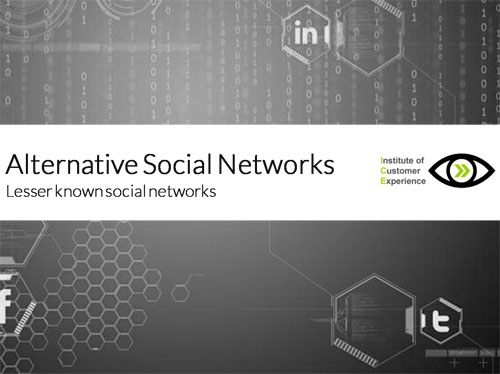
Alternate Social Networks
Facebook, Google+ and Twitter have grown exponentially over the years and they have become synonymous with the term “social media.” Facebook and Twitter are buzzwords nowadays, to the extent that Facebook has around 1 billion users, and “Twitter,” as an English word, has been added to the Oxford English Dictionary! Google+ is also not that far behind. By the end of May 2013, it had 500 million registered users.
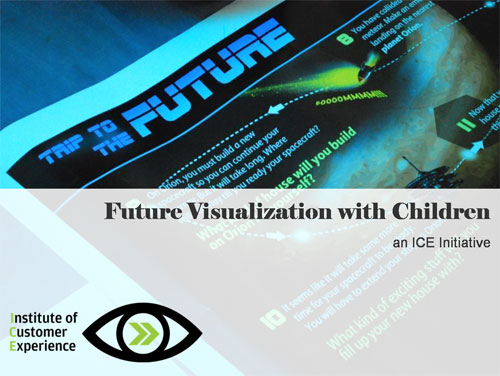
Future Visualization with Children
As part of Institute of Customer Experience, we are constantly on the look out for opportunities that give us an insight into the future of things. We wanted to explore the concept of “beginner’s mind” which is said to be an attitude of openness, eagerness and lack of preconceptions and realized that it was the mind of a child that we wanted a peek into.

Sustainable Lifestyles: Stories of Trendsetters from Around the World
Is our current materialistic lifestyle sustainable for our planet? How long can we continue to do things that make us feel good, but that are harmful and not sustainable for our environment? We need to start seeing our interests and nature’s interest as one and the same.
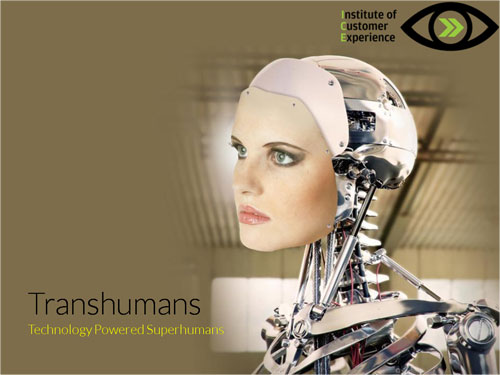
Transhumans:
Technology Powered Superhumans
Transhumanism is the belief or theory that the human race can evolve beyond its current physical and mental limitations by means of science and technology. The more we explored this subject, the more we got fascinated to see how people are riding on the current era technologies to surpass the capabilities of human body. If the current explorations in transhumanism are anything to go by, then, we believe the future will be very exciting!

A Compilation of Interesting Crowdfunded Projects
Crowdfunding web sites are Internet platforms that support the collective cooperation, attention and trust by people who network and pool their money and other resources for projects initiated by other people or organizations.
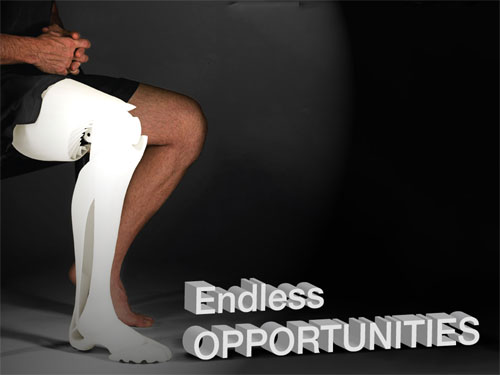
Endless
Opportunities
3D printing is a form of additive manufacturing technology that allows for production of physical objects from digital data, constructing an object of virtually any shape layer-by-layer, by depositing material layers in sequence. 3D printing is a quickly expanding field, with popularity and uses for 3D printers growing every day.
In this report, ICE Team has aggregated all the intriguing applications of 3D printing. The report also includes information on how 3D printing works and major 3D printers available in the market. Finally our future scenarios for a world with 3D printing will provoke you and help you take a step up and see how the future might look like.

Frugal Innovations: A “Necessary” Trend For The Future!
World population is growing continuously with more people living on the Earth than ever before. In 2007, humanity’s total ecological footprint was estimated at 1.5 planet Earths. Resources are becoming increasingly valuable as the Earth is the only source till date and others planets are still to become a viable source of these resources.
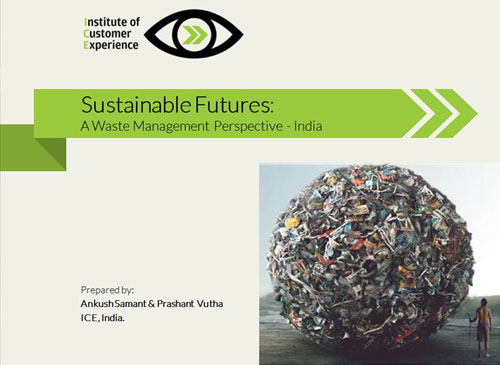
Sustainable Futures: A Waste Management Perspective – India
Waste management is an important part of any sustainable future. In this report we present our views on Sustainable Futures for India from a waste management perspective.
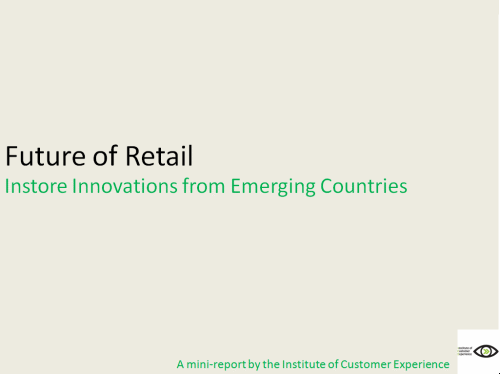
10 in-store innovations from emerging countries: The Future of Retail
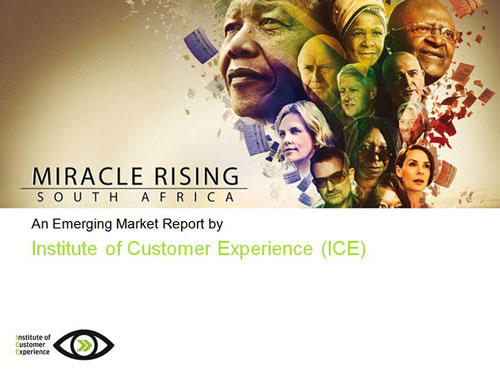
South Africa: An Emerging Market Report
The diversity of South Africa is on one hand a treasure that should be preserved and people still do recognize its importance and carry forward their cultural values.
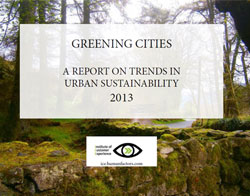
Greening Cities - A Report on
Trends in Urban Sustainability, 2013
"By mid-century, we’re going to have about eight billion – perhaps more – people living in cities or within a day’s travel of one. We will be an overwhelmingly urban species." – Futurist, Alex Steffen

UX Futurists Conference 2013 -
Chapter 1: The Future is Mobile
ICE (Institute of Customer Experience) hosted its first conference - UXFC 2013 Chapter 1 : 'The Future is Mobile' at 'The Trident Hotel' on the 15th of February. This platform was used to connect and discuss the infinite possibilities mobile phones have to offer.

Shiv Vishwanathan on
Future of Entertainment
For this video, the ICE team caught up with the eminent sociologist, Professor Shiv Vishwanathan, for some academic insights on the Future of Entertainment. Professor Vishwanathan lectures at several international universities such as Smith College, Stanford and Goldsmiths, and is a columnist with the Indian Express, Asian Age and Deccan Chronicle.

Chennai Chapter on
Future of Entertainment
This video is part of a series of interviews on the Future of Entertainment, created by the Institute of Customer Experience (ICE). In this series, thought leaders in the industry and academia explain and predict trends related to the future of entertainment.

Three laws of
user experience
Three laws of user experience: Apala Lahiri Chavan at TEDxGolfLinksPark

Future of
Global Customer Experience
This short video teaser introduces the Institute of Customer Experience (ICE) through a series of thought provoking questions about UX in our future world. Visit the ICE Facebook page UX Trendspotting http://facebook.com/UXtrendspotting
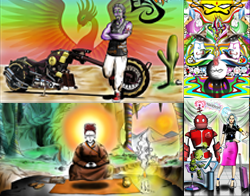
The Future of Global UX -
A Story
Rebellion?
The United Worlds conference had just concluded a very important session and it was the first time in 30 years that there was overwhelming consensus about the most important action items.

Future of
Entertainment Scenarios
The future always intrigues us! And entertainment has always been an integral part of our lives. Therefore, when we released our report on the Future of Entertainment - ‘Ghosts, Resurrections & Fantasy in the Entertainment Industry’, we got very interesting and exciting responses!

Future of Retail
Retail in the simplest sense is the sale of goods and services from individuals or businesses to the enduser. Retailers are part of an integrated system called the supply chain. A retailer purchases goods or products in large quantities from manufacturers directly or through a wholesaler, and then sells smaller quantities to the consumer for a profit.
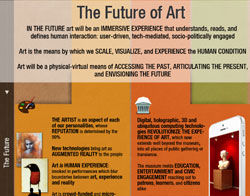
Future of Art
What will "art" look like in the future? What will be its meaning, who will create it? Where will we find art and how will it shape our lives? Join us in plotting the story of the past, present, and future of art, and add your voices to our exploration of emerging artworlds.



